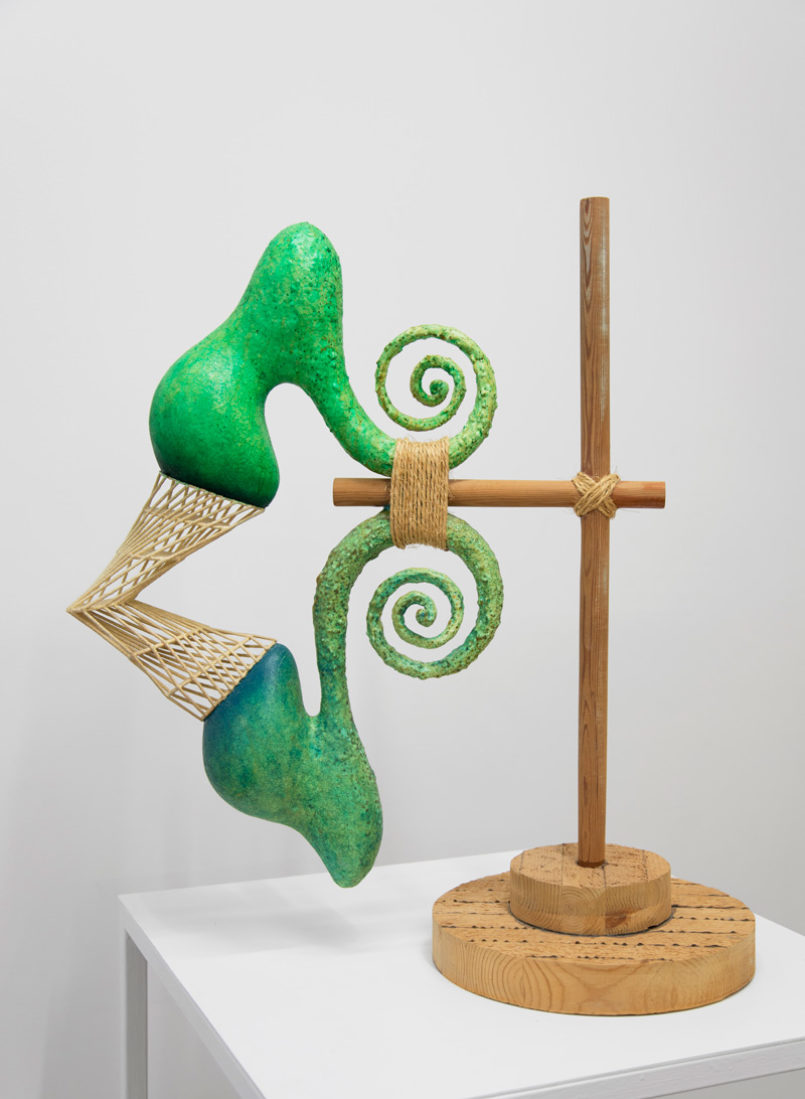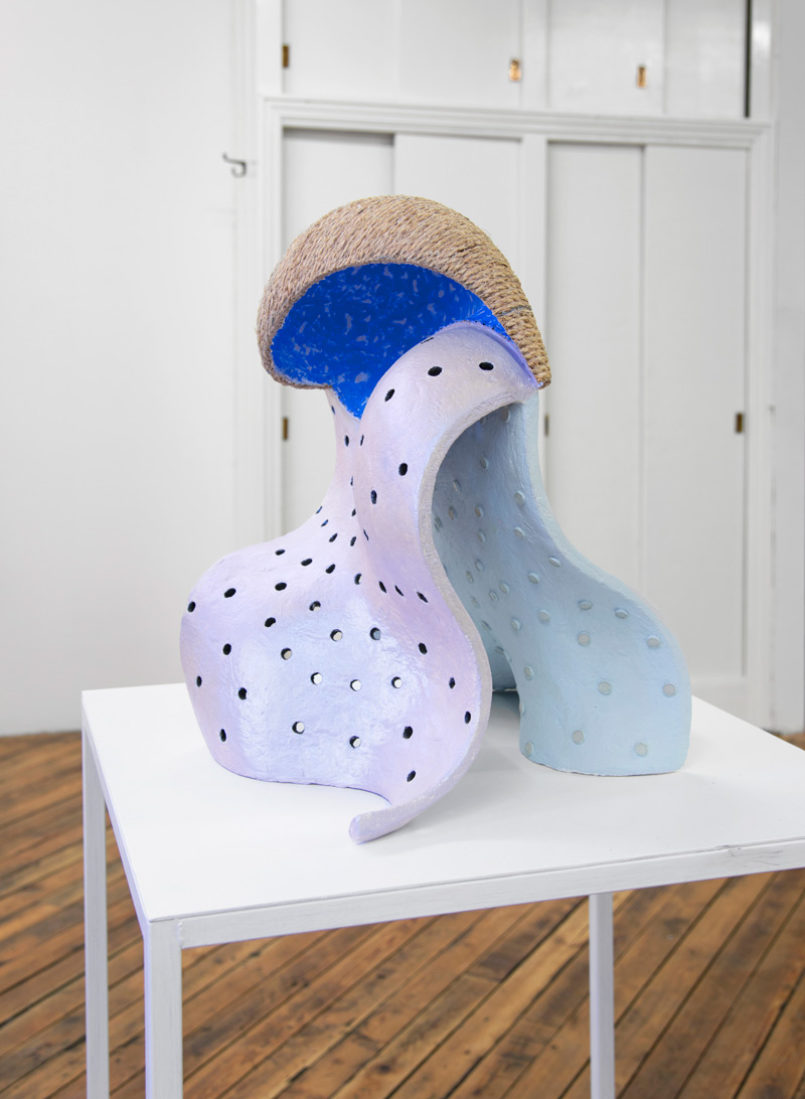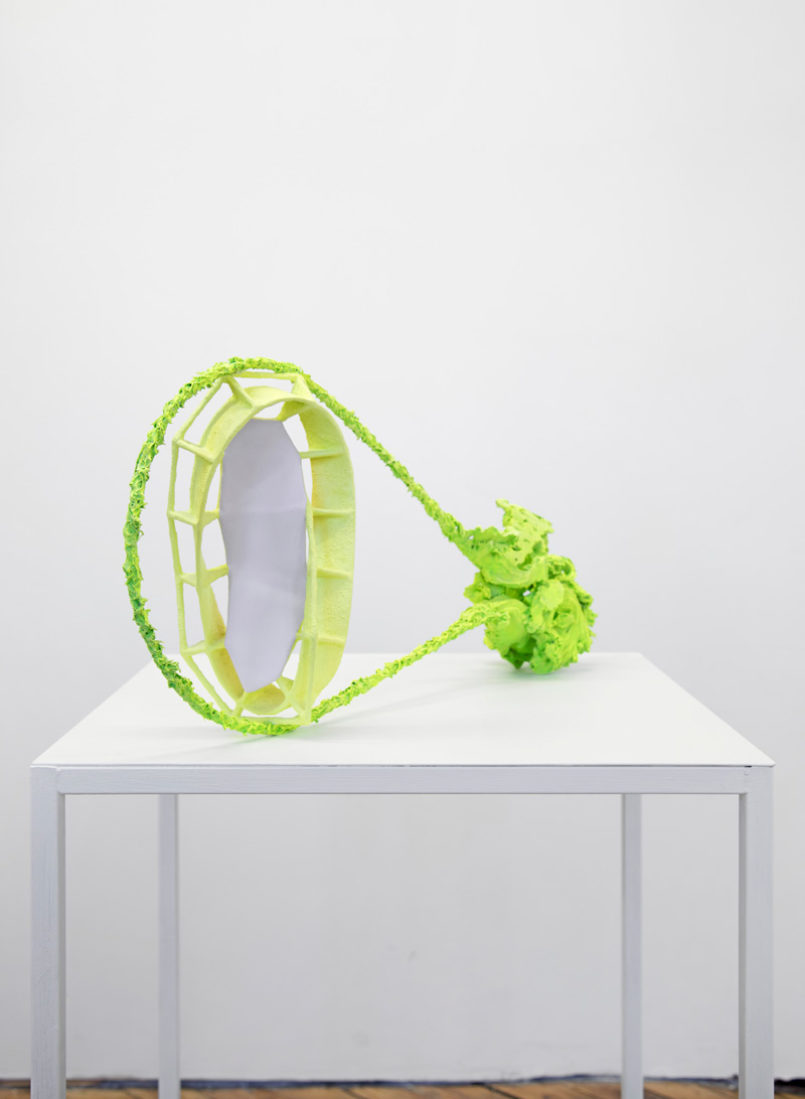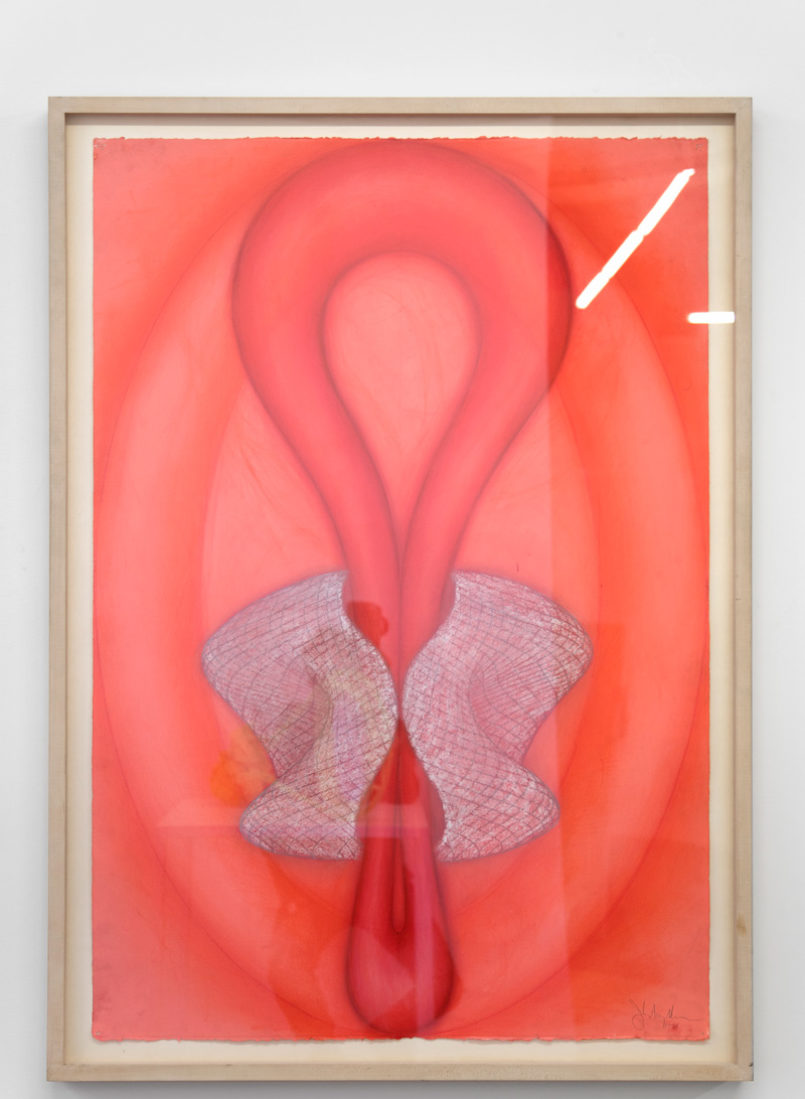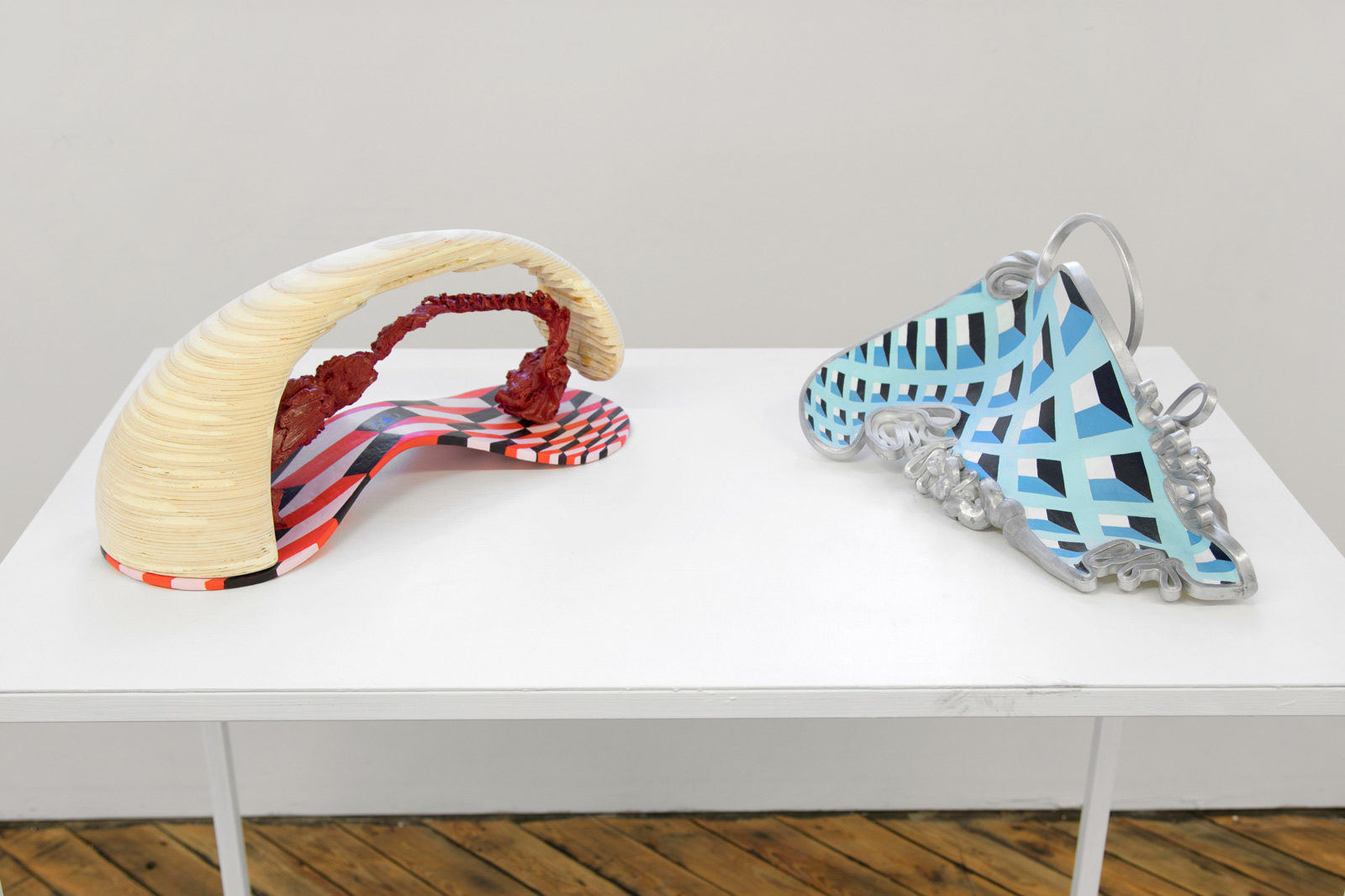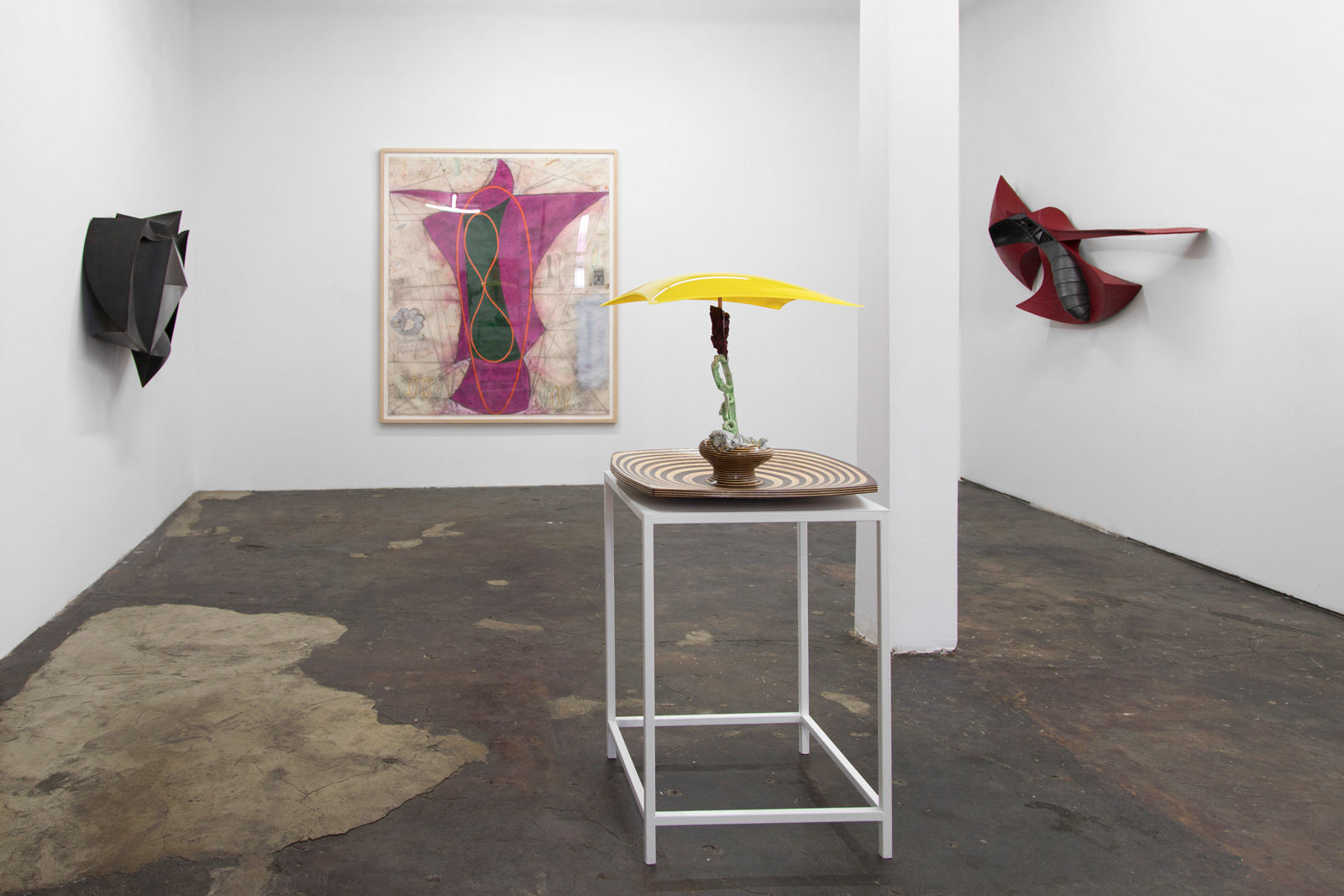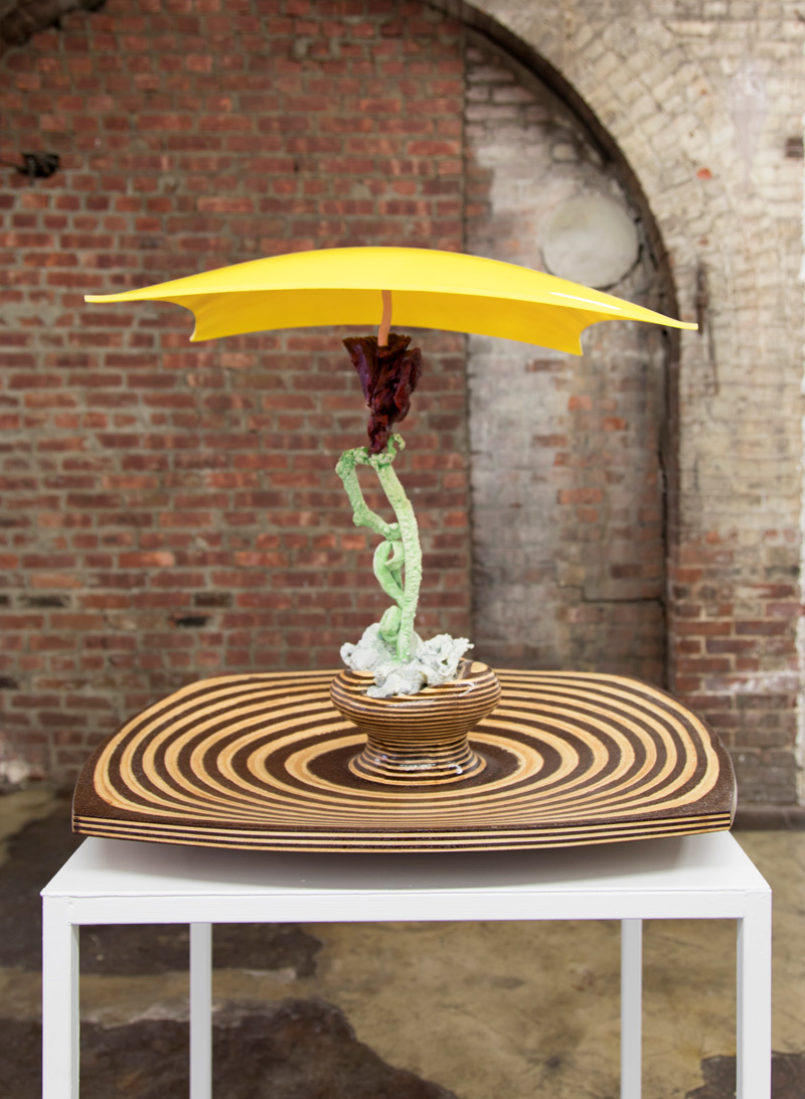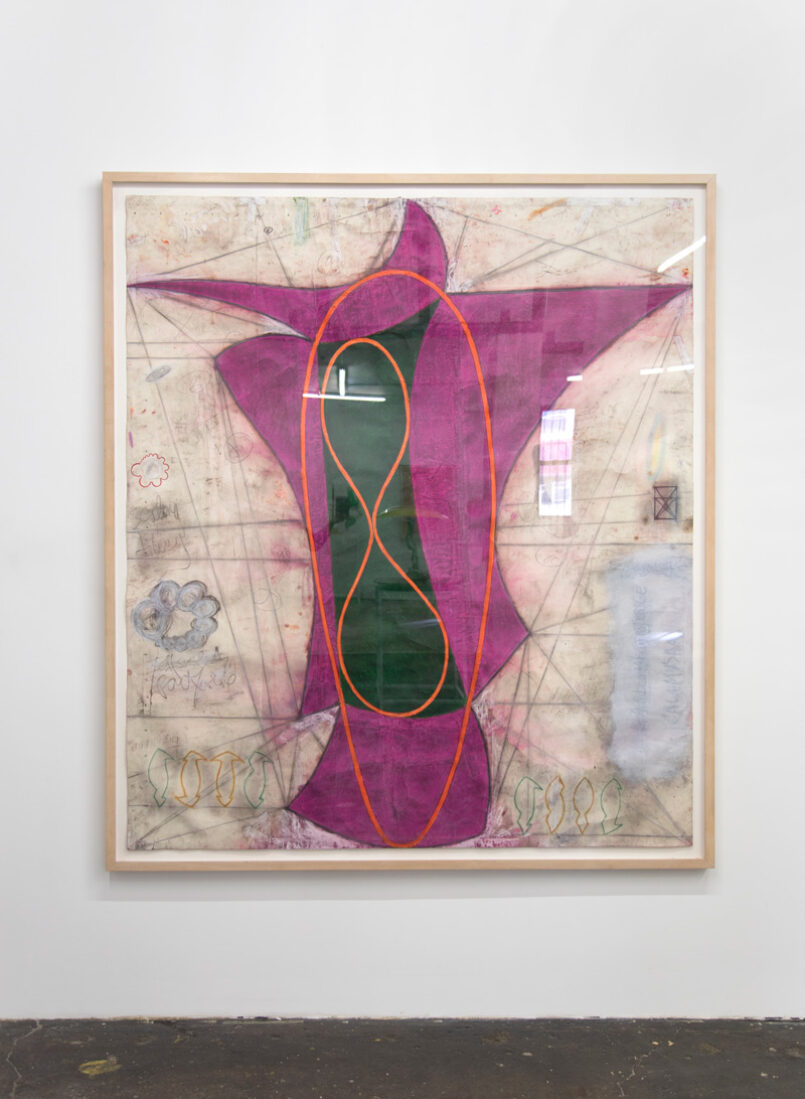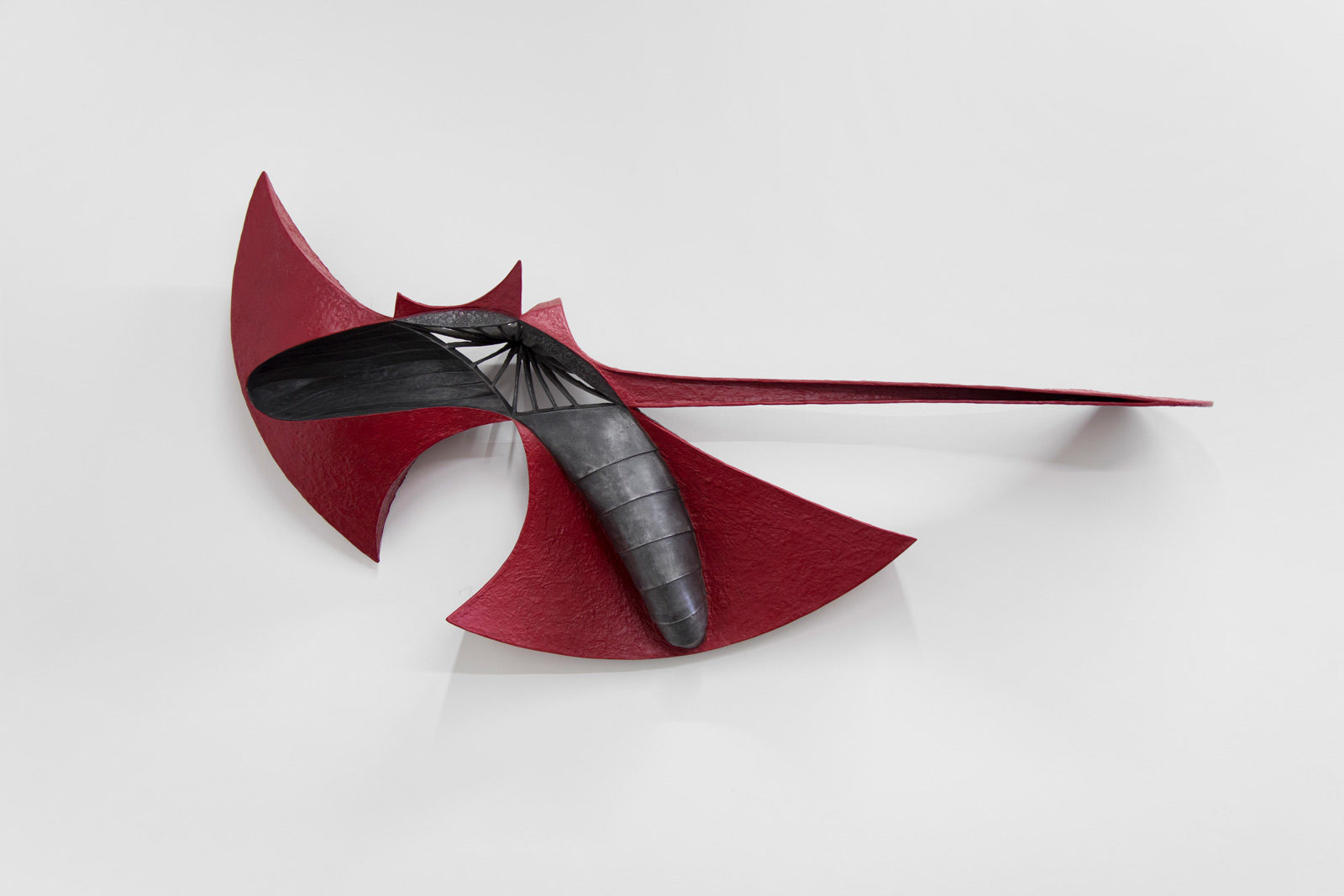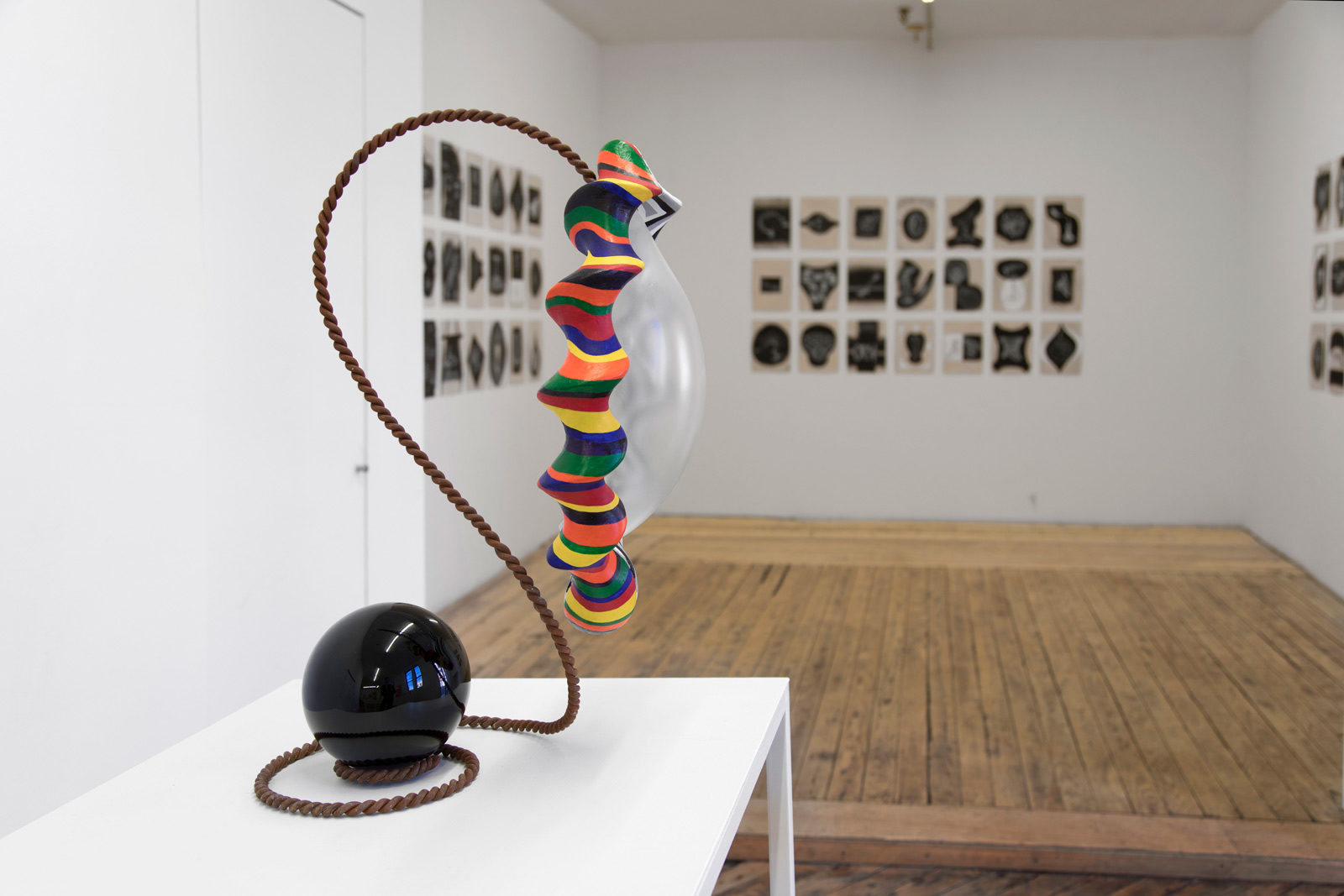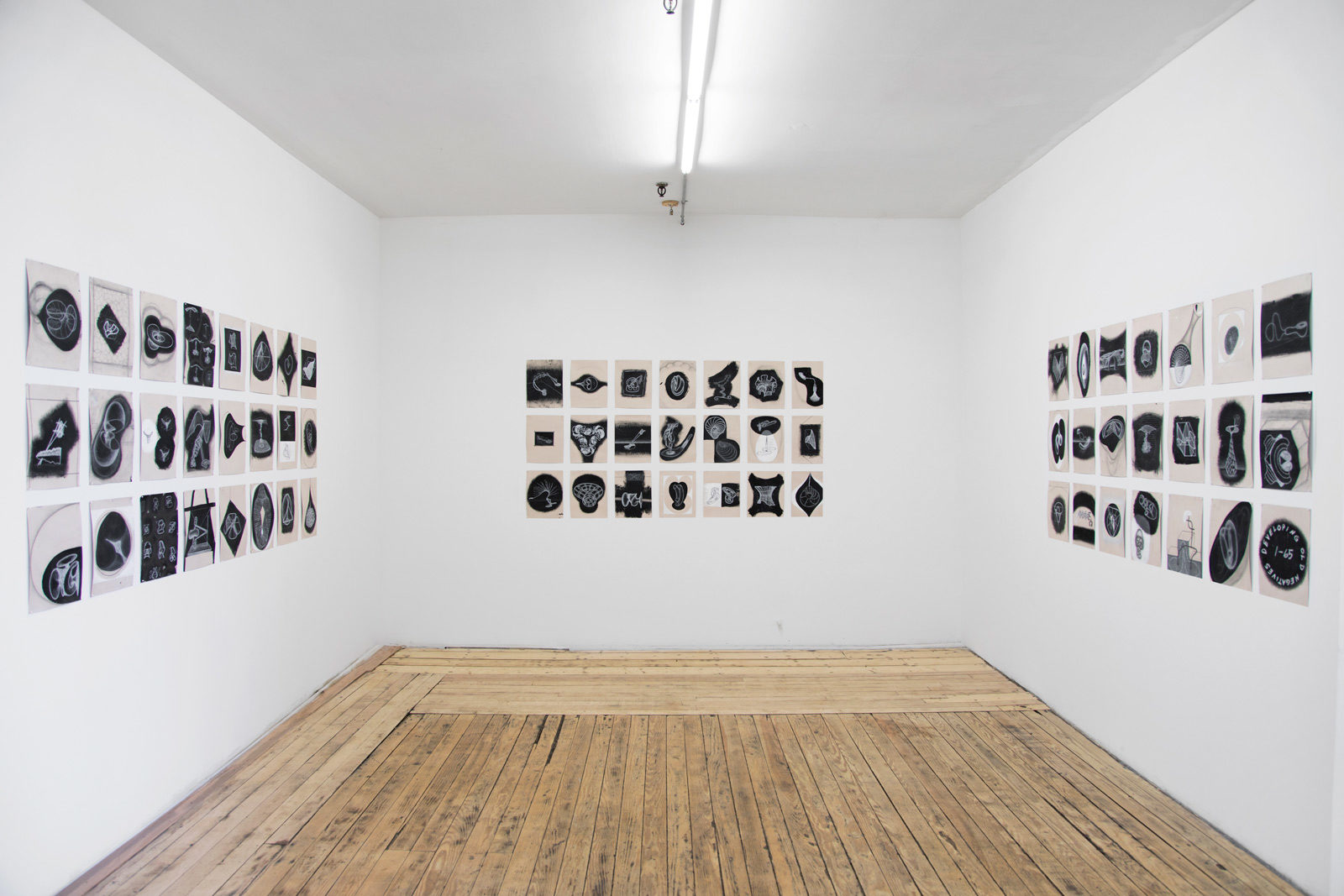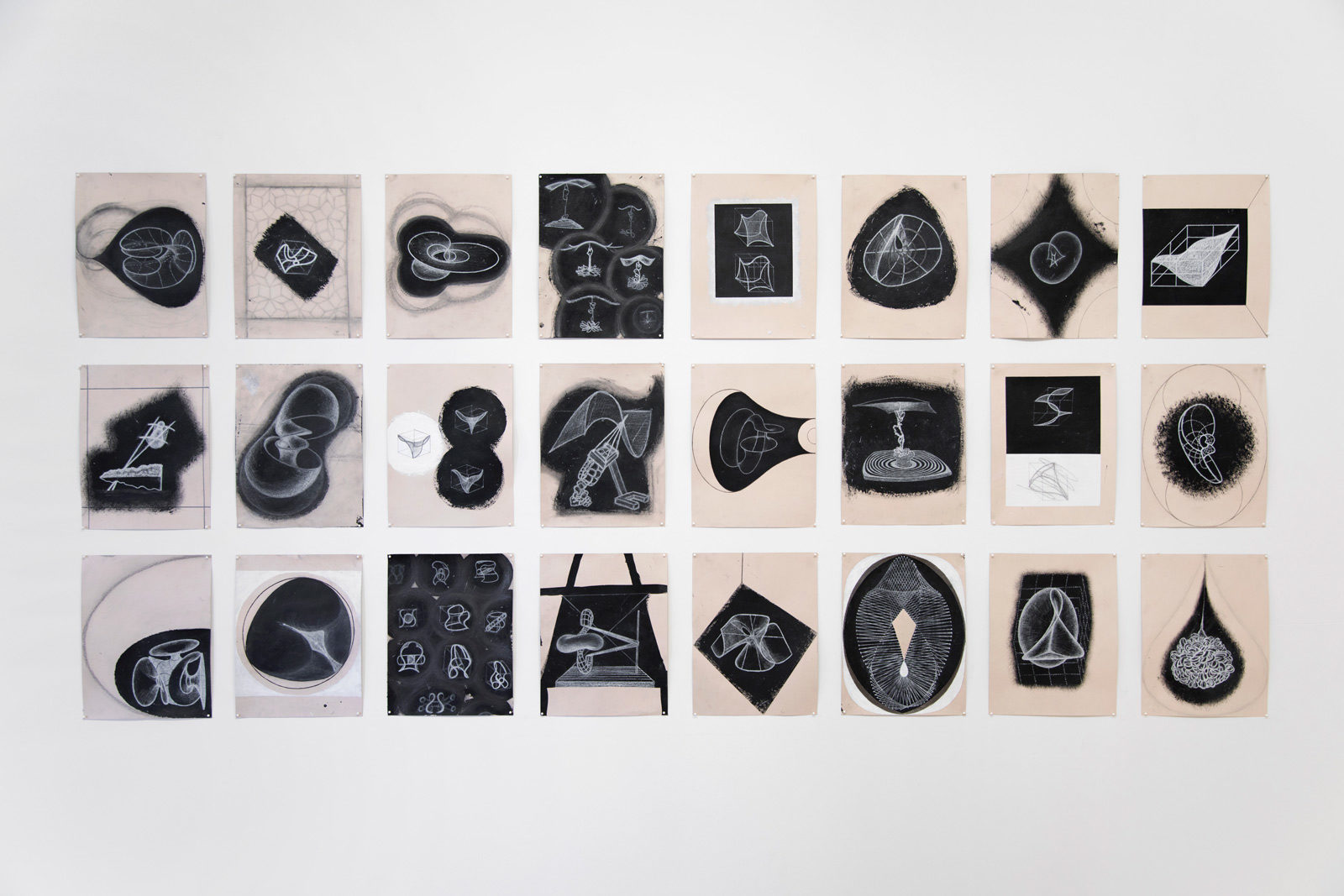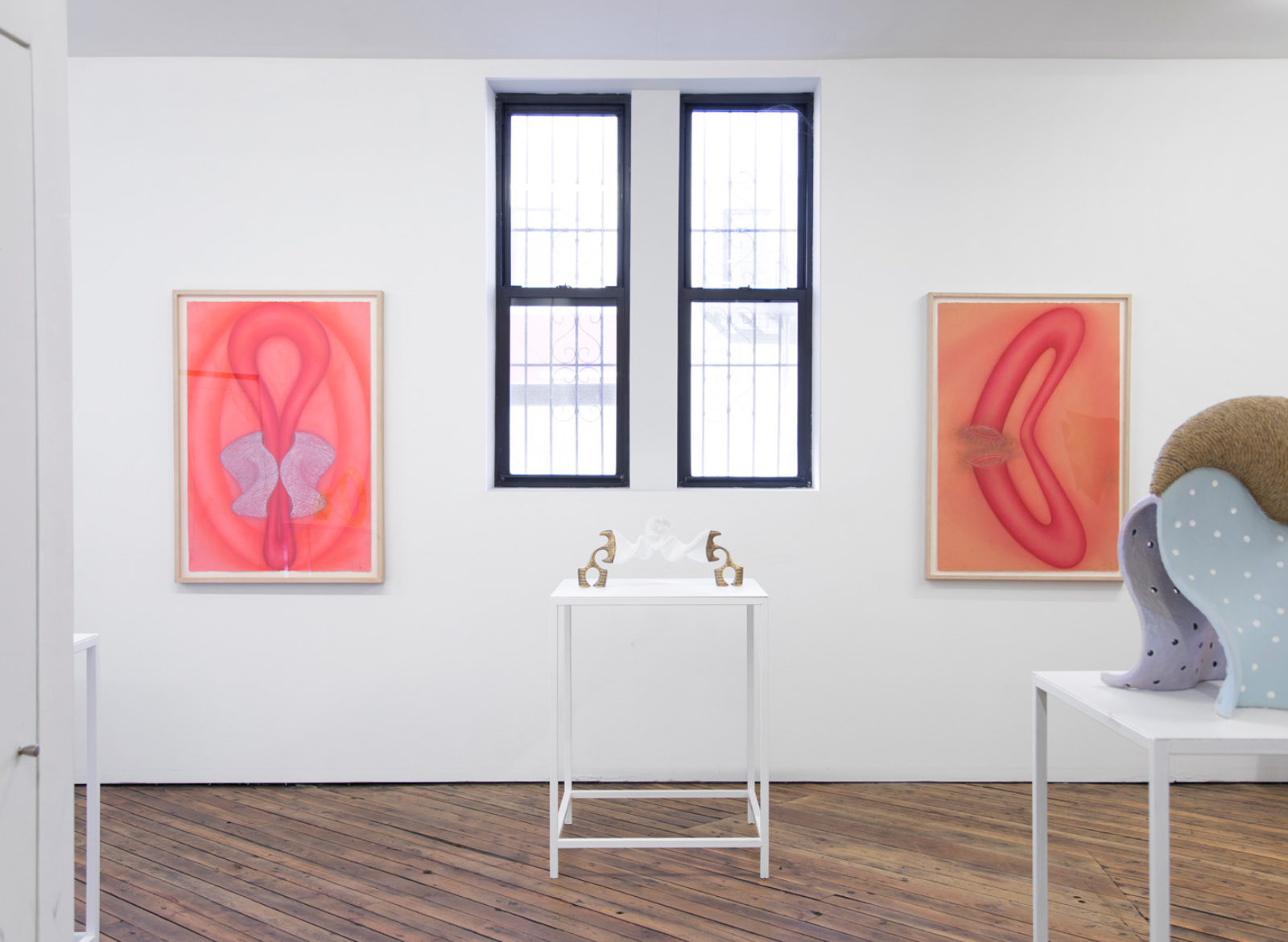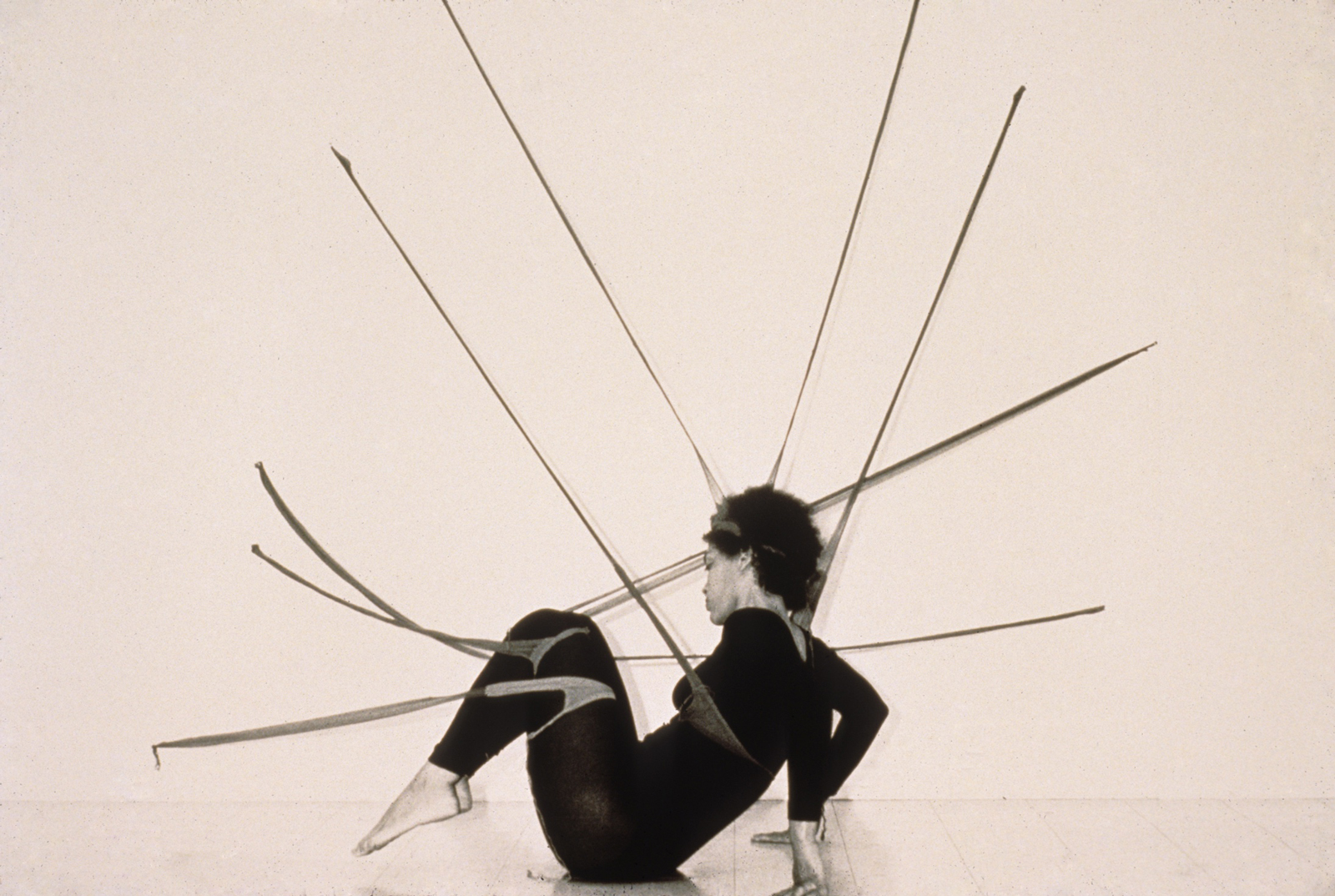Text: Alec Coiro
All Images Courtesy of Safe Gallery
When I went to see the show on Saturday, John Newman was there, having a conversation with Sarah Peters and Michelle Serge and curator Dan Nadel. And when you go see a show that has an artist’s career up on the wall, it’s worth it to consider what he has to say.
Newman spoke a lot about the concept of spectrum, the alternative to binary (and forgive me if I just invoked a binary between spectrum and binaries). The spectrum for him is about a refusal to just one thing, just a sculptor, for example, so it’s a useful way of looking at a sculptor’s show that is full of drawings. And it also helps solve the question of his use of paint on his sculpture. In reference to this he calls himself “A painter in drag,” which, of course, is an embrace of spectrum on multiple levels. The spectrum also serves as a charming way into his personal identity: he’s a hippy but also a disco dancer; if you are constrained by binaries embodying those two selves would be anathema.
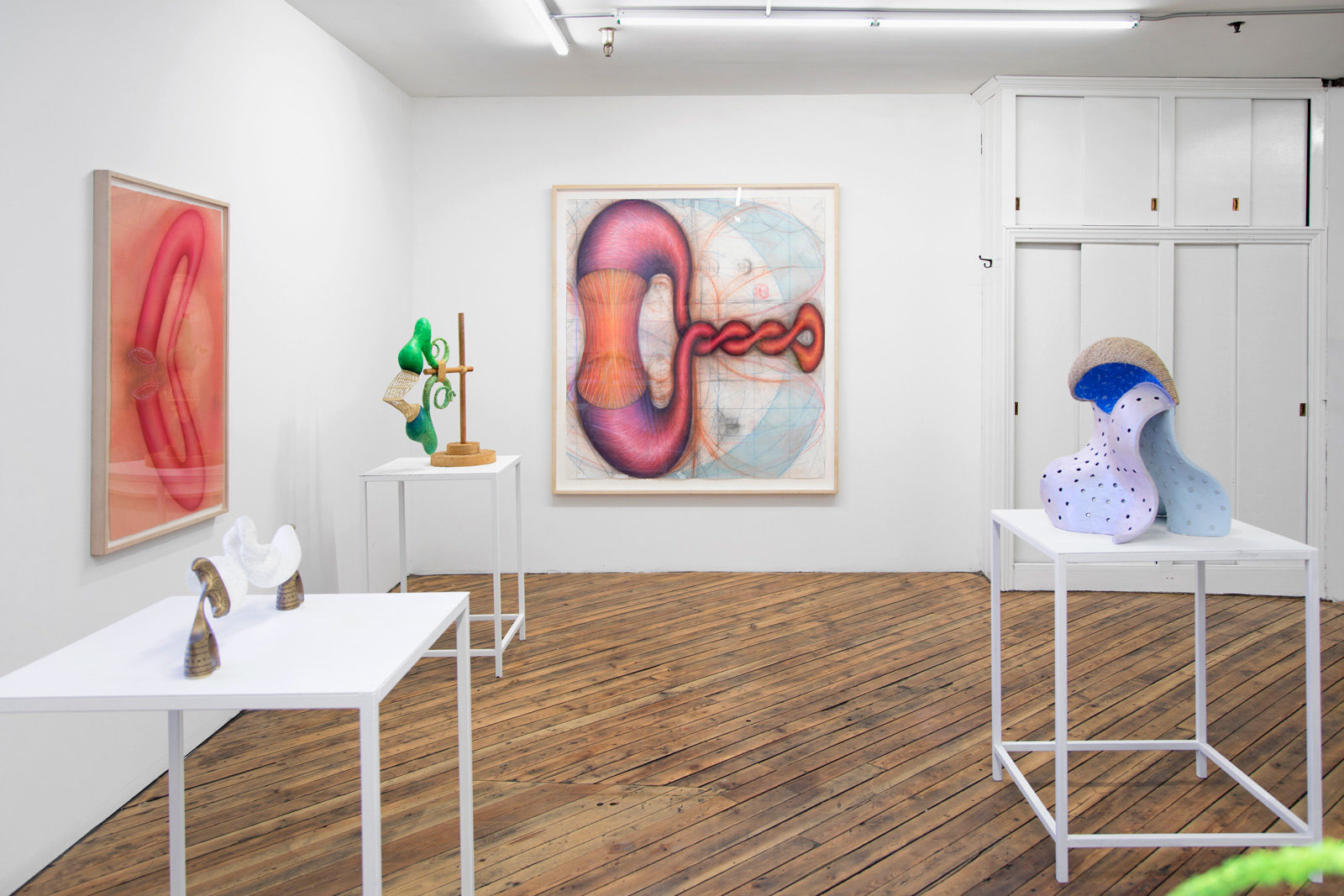
Also a helpful way into at his work was his discussion of his confrontations with minimalism, and the exploration of what to do after minimalism had achieved “zero.” You can see how Newman is an artist who had been constrained and is now free from those constraints, which I think is a very different thing from a younger artist who starts off less constrained. Part of this difference is the way Newman’s work is consistently meaningful in and of itself. It does not need to be buttressed by an artist’s statement or considered in context; at one point he derides the work you take home from an art installation as a “trophy object,” a throwaway line, which I actually thought was one of the most insightful moments. Artist’s statement he may not need, but it is often amusing to hear what motivated his shift between artistic periods; his shift to paintings with cleaner lines was the result of the realization that “people just love shmutz, and I was like ‘fuck you.’”
It’s worth concluding by recognizing the significance of this show being at Safe Gallery. Newman is an significant figure with work at MoMA, The MET, The Tate modern, basically everywhere. So this show could easily be up in a gallery in somewhere in Manhattan, but it’s at Safe on the borderlands of Bushwick. What this means is open for interpretation, but it’s a pointed choice, and I think an admirable one. To me Newman is saying: here is my career thus far, but I’m showing it to you in a place where new careers are created. Thus it’s a refusal of the retrospective as endpoint, and suggest an artist whose career is always beginning anew with each new phase.
